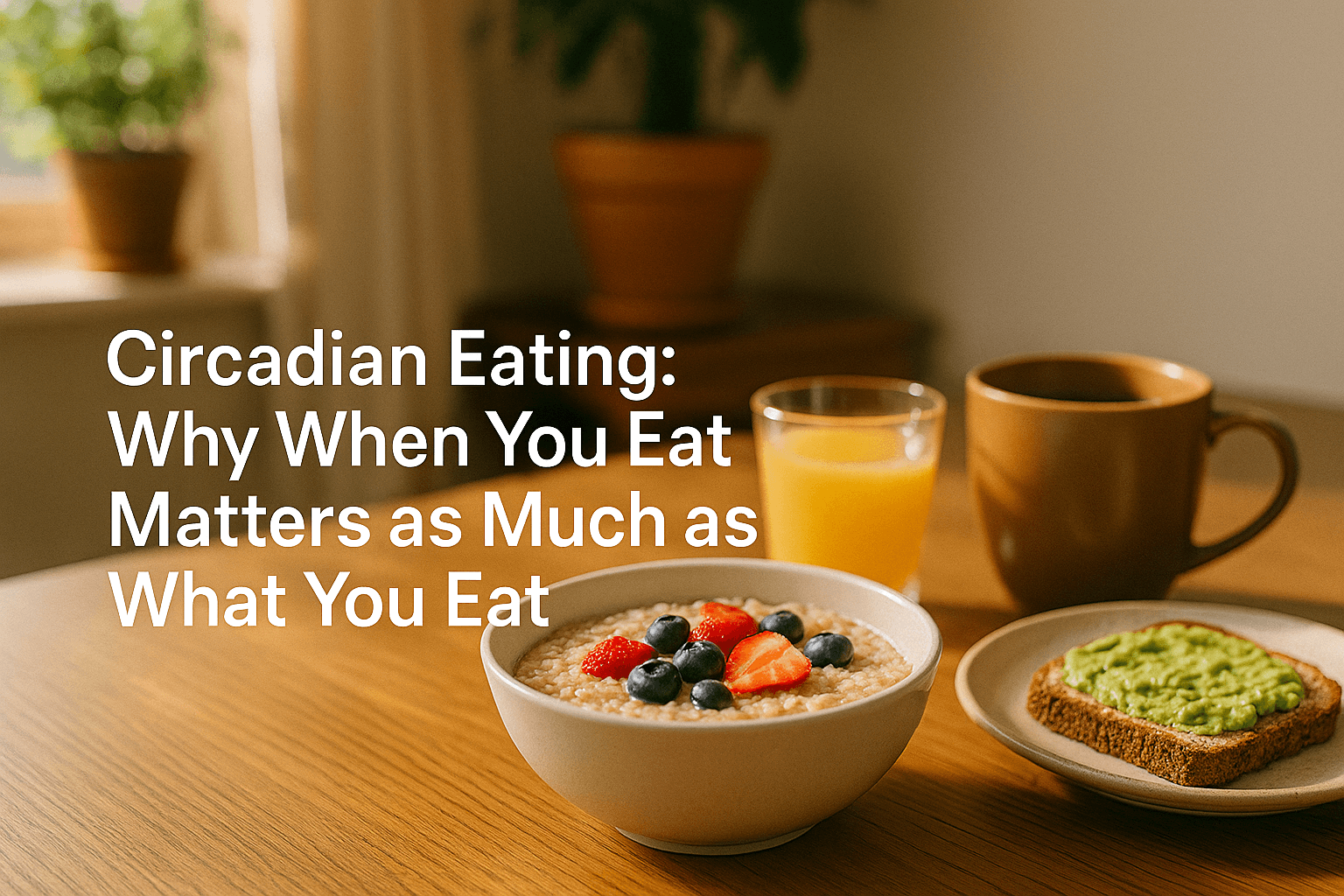In the world of nutrition, we often obsess over what we eat — calories, macros, superfoods. But recent research reveals another crucial piece of the puzzle: when we eat. This timing-based approach, known as circadian eating, aligns food intake with the body’s internal clock to support digestion, metabolism, and hormonal balance.
Your body follows a 24-hour circadian rhythm, regulating everything from body temperature to sleep-wake cycles — and yes, even digestion. Hormones like insulin, ghrelin, and leptin fluctuate throughout the day, influencing how efficiently your body absorbs, stores, and uses nutrients.
Eating in sync with your internal clock can:
- Enhance metabolic health and reduce the risk of type 2 diabetes
- Improve digestion and reduce bloating or discomfort
- Support better sleep by avoiding late-night metabolic strain
- Regulate appetite and cravings more naturally
- Boost energy and focus during peak activity hours
Key principles of circadian eating:
- Front-load your calories — Eat the most in the morning and afternoon when your metabolism is most active
- Avoid eating 2–3 hours before bedtime to allow melatonin to rise
- Time your meals consistently to reinforce your body’s rhythm
- Embrace natural light in the morning to regulate hunger hormones
- Consume high-protein breakfasts to support satiety and blood sugar
This doesn’t mean rigid schedules or skipping social dinners — it means eating with intention, using the body’s biological rhythm as your guide. When paired with healthy food choices, circadian eating can become a simple yet powerful way to feel more energized, balanced, and in control.




